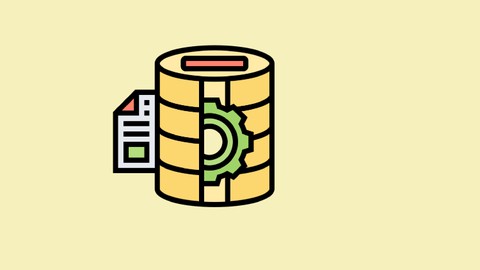
Microsoft SQL for beginners : Perform CRUD Operations
Microsoft SQL for beginners : Perform CRUD Operations, available at $34.99, has an average rating of 3.5, with 25 lectures, based on 3 reviews, and has 645 subscribers.
You will learn about Setup SQL Server Database Server Connect to SQL Server using SSMS Restore sample database Create a database Create a table in the database Insert data into the table Create views Update the data Read the data Backup database Delete the data Truncate table Delete table Delete database Restore database This course is ideal for individuals who are Beginners to Microsoft SQL (T-SQL) or Beginner Data Analyst It is particularly useful for Beginners to Microsoft SQL (T-SQL) or Beginner Data Analyst.
Enroll now: Microsoft SQL for beginners : Perform CRUD Operations
Summary
Title: Microsoft SQL for beginners : Perform CRUD Operations
Price: $34.99
Average Rating: 3.5
Number of Lectures: 25
Number of Published Lectures: 25
Number of Curriculum Items: 25
Number of Published Curriculum Objects: 25
Original Price: $27.99
Quality Status: approved
Status: Live
What You Will Learn
- Setup SQL Server Database Server
- Connect to SQL Server using SSMS
- Restore sample database
- Create a database
- Create a table in the database
- Insert data into the table
- Create views
- Update the data
- Read the data
- Backup database
- Delete the data
- Truncate table
- Delete table
- Delete database
- Restore database
Who Should Attend
- Beginners to Microsoft SQL (T-SQL)
- Beginner Data Analyst
Target Audiences
- Beginners to Microsoft SQL (T-SQL)
- Beginner Data Analyst
Transact-SQL is Microsoft’s and Sybase’s proprietary extension to the SQL used to interact with relational databases.
What is SQL?
-
SQL stands for Structured Query Language
-
SQL lets you access and manipulate databases
-
SQL became a standard of the American National Standards Institute (ANSI) in 1986, and of the International Organization for Standardization (ISO) in 1987
-
What Can SQL do?
-
SQL can execute queries against a database
-
SQL can retrieve data from a database
-
SQL can insert records in a database
-
SQL can update records in a database
-
SQL can delete records from a database
-
SQL can create new databases
-
SQL can create new tables in a database
-
SQL can create stored procedures in a database
-
SQL can create views in a database
-
SQL can set permissions on tables, procedures, and views
-
SQL is a Standard – BUT….
-
Although SQL is an ANSI/ISO standard, there are different versions of the SQL language.
-
However, to be compliant with the ANSI standard, they all support at least the major commands (such as SELECT, UPDATE, DELETE, INSERT, WHERE) in a similar manner.
Note: Most of the SQL database programs also have their own proprietary extensions in addition to the SQL standard!
This course you will learn how to create a database, create a table in the database, insert data into the table, update the data, read the data, delete the data, and then delete the table. You will create views ,backup and restore database.
Course Curriculum
Chapter 1: Microsoft SQL Server Setup
Lecture 1: Introduction
Lecture 2: What is SQL
Lecture 3: What is T-SQL ( Microsoft SQL )
Lecture 4: What is SQL Server
Lecture 5: SQL Server Editions
Lecture 6: Download SQL Server
Lecture 7: Install SQL Server
Lecture 8: Install SSMS
Lecture 9: Connect SSMS to SQL Server
Lecture 10: Restore sample database
Lecture 11: Database Concepts
Lecture 12: Overview of performing CRUD Operations with Microsoft SQL
Chapter 2: Performing CRUD Operations
Lecture 1: What is CRUD
Lecture 2: Create a database
Lecture 3: Create a table
Lecture 4: Insert data into table
Lecture 5: Query database
Lecture 6: Create views
Lecture 7: Update database records
Lecture 8: Backup database
Lecture 9: Delete records from database
Lecture 10: Truncate table
Lecture 11: Drop table
Lecture 12: Drop database
Lecture 13: Restore database
Instructors
-
247 Learning
An investment in knowledge pays the best interest
Rating Distribution
- 1 stars: 0 votes
- 2 stars: 0 votes
- 3 stars: 2 votes
- 4 stars: 1 votes
- 5 stars: 0 votes
Frequently Asked Questions
How long do I have access to the course materials?
You can view and review the lecture materials indefinitely, like an on-demand channel.
Can I take my courses with me wherever I go?
Definitely! If you have an internet connection, courses on Udemy are available on any device at any time. If you don’t have an internet connection, some instructors also let their students download course lectures. That’s up to the instructor though, so make sure you get on their good side!
You may also like
- Best Emotional Intelligence Courses to Learn in March 2025
- Best Time Management Courses to Learn in March 2025
- Best Remote Work Strategies Courses to Learn in March 2025
- Best Freelancing Courses to Learn in March 2025
- Best E-commerce Strategies Courses to Learn in March 2025
- Best Personal Branding Courses to Learn in March 2025
- Best Stock Market Trading Courses to Learn in March 2025
- Best Real Estate Investing Courses to Learn in March 2025
- Best Financial Technology Courses to Learn in March 2025
- Best Agile Methodologies Courses to Learn in March 2025
- Best Project Management Courses to Learn in March 2025
- Best Leadership Skills Courses to Learn in March 2025
- Best Public Speaking Courses to Learn in March 2025
- Best Affiliate Marketing Courses to Learn in March 2025
- Best Email Marketing Courses to Learn in March 2025
- Best Social Media Management Courses to Learn in March 2025
- Best SEO Optimization Courses to Learn in March 2025
- Best Content Creation Courses to Learn in March 2025
- Best Game Development Courses to Learn in March 2025
- Best Software Testing Courses to Learn in March 2025






















